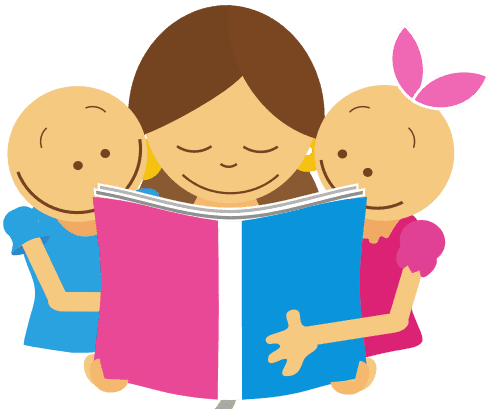How Storytime Helps Children Learn Thankfulness

Posted on November 22nd, 2025
Gratitude is one of the most valuable habits a child can learn, yet many young children struggle to understand what it truly means. Their world is fast-paced, exciting, and constantly filled with new experiences, making it easy for appreciation to fade into the background. That is why children’s books play a key role. Through characters, storytelling, and gentle messages, books help kids understand how thankfulness works in real life.
Why Gratitude Matters for Children
Gratitude shapes the way children view the world. When a child learns how to appreciate meaningful moments, kindness, or help from others, they begin building habits that support emotional strength and thoughtful communication. These habits carry into friendships, school activities, and daily routines.
Many children are introduced to gratitude through simple prompts such as saying “thank you,” but deeper understanding often develops when the concept is taught through relatable characters or stories. Books allow children to observe behavior, see consequences, and recognize the good in everyday experiences.
Gratitude also contributes to emotional clarity. Children who practice thankfulness tend to adapt more easily to new experiences. They become better at recognizing what supports them, which helps build steady confidence. These early lessons help children identify emotions, understand their value, and approach challenges with a more grounded mindset.
How Books Teach Gratitude in Simple Ways
Books play a key role in teaching gratitude because they break down big ideas into small, accessible moments. Children grasp concepts more easily when they see them unfold through characters, settings, and storytelling. These stories give kids a chance to explore emotions, follow a character’s growth, and connect with lessons at their own pace.
To highlight how books support thankfulness, several elements stand out clearly:
-
Characters help children recognize emotions they may not yet know how to describe.
-
Storylines show how appreciation affects friendships, decisions, and outcomes.
-
Visuals in picture books reinforce positive behaviors and spark conversation.
These elements create a learning environment that is both soft and powerful. When children see a character experience gratitude, they begin mirroring those feelings in real life. They learn how appreciation brings comfort, joy, and connection. They also notice how characters respond to kindness, which helps normalize the idea that thankfulness should be expressed.
The Role of Storytime in Building Appreciation
Storytime offers children more than entertainment. It becomes a moment of connection where they absorb emotional lessons while feeling safe and engaged. Gratitude grows naturally in this environment because children are calm, attentive, and open to learning.
Several approaches can help parents strengthen gratitude during storytime:
-
Asking your child how the character might feel after receiving help encourages empathy.
-
Pointing out small moments of kindness helps children recognize appreciation in action.
-
Discussing the character’s choices teaches children how grateful thinking influences behavior.
These conversations give children space to reflect. Instead of rushing through the story, parents can slow down to highlight moments that reinforce thankfulness. This strengthens emotional awareness and helps children understand how gratitude relates to everyday experiences.
Why Characters Make Gratitude Easier to Learn
Children often see themselves in characters. When a character learns a lesson, struggles with a feeling, or celebrates a small moment, children relate to the experience. This connection makes gratitude easier to understand.
Characters can show gratitude in ways that feel comfortable for young readers. Some may express appreciation quietly, while others display enthusiasm or joy. Each approach helps children recognize that gratitude can look different depending on personality.
Books with expressive illustrations help children see gratitude visually. Changes in facial expressions, settings, or reactions reinforce emotional learning. Visual storytelling allows young readers to connect dots that may be difficult to express verbally.
How Gratitude Books Benefit Kids Ages 4–8
Children between the ages of 4 and 8 are at an important stage of emotional development. They are learning how to communicate feelings, understand empathy, and build early social skills. Gratitude books give them a foundation they can build on as they grow.
Here’s how gratitude-centered books make a strong impact for this age group:
-
They help children recognize small joys, which supports emotional stability.
-
They encourage thoughtful behavior by highlighting kindness and appreciation.
-
They create engaging moments that children want to revisit, reinforcing the lesson over time.
Books written for this age group often use repetition, clear language, and expressive illustrations to make lessons digestible. Children start remembering phrases, associating images with emotions, and practicing gratitude with more intention.
Related: Why Patience Matters: Emotional Development in Children
Conclusion
Summer implies a time of warmth and energy, but it can also challenge your home’s electrical systems. Taking active steps in maintaining, inspecting, and upgrading these systems ensures that your household runs smoothly and safely. By focusing on routine checkups and attention to the small yet significant details, you minimize the potential for costly incidents and optimize your home’s energy efficiency. Your diligence in these areas makes all the difference.
At Janet Ashmore, we recognize how helpful children’s books can be in shaping gratitude, kindness, and emotional growth. Stories allow children to explore feelings in a calm and engaging way, helping them understand the value of appreciation and how simple thankful moments can brighten their world.
Discover how the lovable spider in the book can spark gratitude in your child — check out the story here! If you have questions or would like more information, reach out to [email protected]. We look forward to helping you introduce gratitude to your child in a way that feels fun, warm, and meaningful.
Get In Touch
Let's Connect
I am always happy to hear from you, so don’t hesitate to send a message below!
